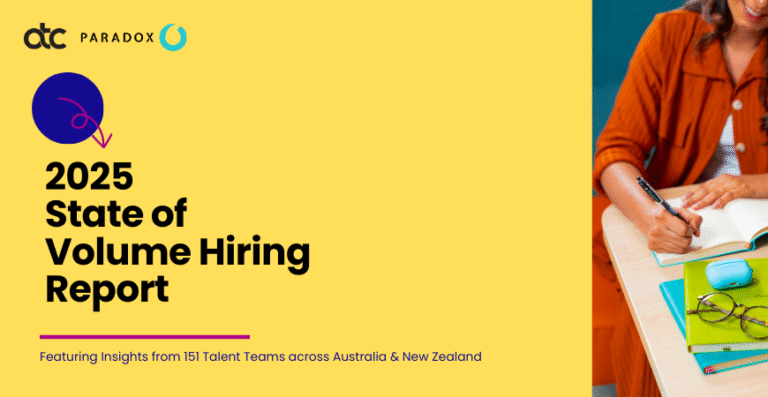Internal TA’s view on Agency Spend and Relationships varies so greatly from function to function.
I sat down with Trevor Churchley, Founder & MD of Talentology, to discuss how the TA/Agency relationship should be modelled, agency recruiter pricing structures, how to manage candidate experience in an agency environment, ageism in IT, and much more.
I’ve seen many Organisations hold an Agency partner at arms length but I can’t how maximum value can be derived from that perspective. What approach should Organisations take to get the best of our their Agency Partnerships?
Take a more strategic, value-seeking approach. In a strategic collaboration, organisations and recruiters transcend beyond mere transactional interactions. They commit to investing quality time and effort, aiming not just to fill vacancies but to deeply understand and align with the organization’s long-term goals. It takes a quality over quantity approach, increasing each other’s return on cost and time. Through active, regular communication, this partnership focuses on crafting outcomes that are thoughtfully aligned with each company’s broader objectives, rather than simply hoping for the best in a transactional manner. This approach significantly enhances the recruitment process, leading to more meaningful and effective hiring results.
I’ve always been a fan of engaging one Partner on an exclusive basis but you hear so many stories of Organisations farming out roles to multiple partners or everyone on their panel. Why should Internal TA work with an Agency on a role with one Agency Exclusively?
Awarding exclusive recruitment rights enhances the engagement quality for both parties. Organizations benefit from receiving fewer, but more suitable resumes, saving hiring managers’ time in review and shortening hiring times, thus boosting business efficiency. This approach also prevents the job market from being overhyped and overwhelmed by multiple ads from competing recruiters. For recruiters, safe in the knowledge that a successful placement is achievable, exclusivity allows them to assign top-quality consultants who can dedicate significant time and effort to manage campaigns effectively, ensuring quality outcomes and providing a high level of service throughout the recruitment process.
There a few different free structures out there. If we are being charged a % of salary package only if the role is successfully filled, this means that percentage is padded to cover the costs of all of the time and workload that goes into attempting to fill other roles that don’t eventuate. Why do you think Recruiters are not paid for their time like other professions are?
Great question. As a sales-centric industry, agency recruiters are often paid based on successful placements rather than for their time because this model aligns their incentives with the outcomes desired by their clients. It motivates recruiters to ensure they are not only filling positions but also finding candidates who are the right fit and likely to contribute positively to the company in the long term. This performance-based compensation model helps manage costs by paying for results rather than efforts, which can vary significantly across different recruitment organisations. It also encourages recruiters to invest in understanding the needs of both the companies and the job seekers they serve, ultimately leading to more effective and efficient recruitment processes.
The relationship between fee structures and the quality of recruitment services is complex. While higher fees might incentivize recruiters to deliver higher quality candidates, it’s more important to consider the overall value delivered by the recruiters. Exclusive partnerships could lead to better alignment and understanding, enhancing the overall recruitment process. Additionally, extending service guarantees to all forms of recruitment, including temporary and contract positions, could be a way to ensure quality and accountability in the recruitment process.
I’ve noticed that % fees are generally higher for Retained roles even though the Agency Recruiter is being paid at Milestones and has some guaranteed billing. Generally it’s because of a heightened process and service. Are we saying we don’t care about the process and service level as much if we aren’t attached to paying a fee?
This is an interesting topic. You would think that fees should be higher when agencies are forced to compete in order to pay for failure, and fees should be discounted when agencies win exclusive business as success is all but guaranteed. However, in the recruitment industry, the opposite is the standard practice. Irrespective of the fee, achieving quality and service levels should be at the forefront of a recruiter’s focus. Judging the recruitment experience on the holistic value delivered rather than just the outcome should be a priority.
Why and how should In-house align their candidate experience with what the Agency provides? For example, if in-house claim to respond to every applicant, how do we ensure Agency Partners do the same?
Enhancing the candidate experience is a critical obligation for both organizations and recruitment partners. There is no place for candidate ghosting. They should strive to respond to every job seeker in a meaningful and respectful way, elevating the engagement quality and enhancing their employer and public brand. Organizations can enforce this as part of their supply chain agreement, similar to their policies on Modern Slavery or Environmental Sustainability. By making respectful communication a standard practice, organizations can improve their brand perception, attract top talent, and set a benchmark for ethical and responsible recruitment practices. This approach is fundamental to maintaining a positive and professional image in the competitive job market.
I know that tackling Ageism in IT is something you are passionate about Trevor, whether raised by Agency or Internal, how and why do we get both parties on board to reduce this bias and discrimination?
Confronting ageism is a vital aspect of DE&I strategies in the IT sector. It’s not just about promoting fairness; it directly affects the wellbeing of mature job seekers and the overall inclusiveness of the industry. To effectively address this, organizations and recruiters need to form a united front – just like they have developed for Modern Slavery and Sustainability. By working together, they can develop and implement strategies that actively combat age biases, ensuring a diverse and inclusive workplace. This partnership is key to fostering an environment where experience and maturity are valued and to driving meaningful change in the industry.
What advice do you have for both parties, Agency and Internal Customer, so that we can all move ahead in the right direction?
Work together in true partnership. If your organisation insists on working in a contingent framework, work with one recruitment partner at a time to ensure fairness as exclusivity provides better outcomes for all parties. For both the agency and the internal customer, the key is really to communicate openly and build a strong partnership. It’s like being on the same team with a common goal. Sharing insights, feedback, and expectations clearly can really help smooth out the process. Plus, staying flexible and open to adjusting strategies along the way can make a big difference in finding the right fit for each role. It’s all about working together, keeping those lines of communication wide open, and being aligned on what success looks like.









